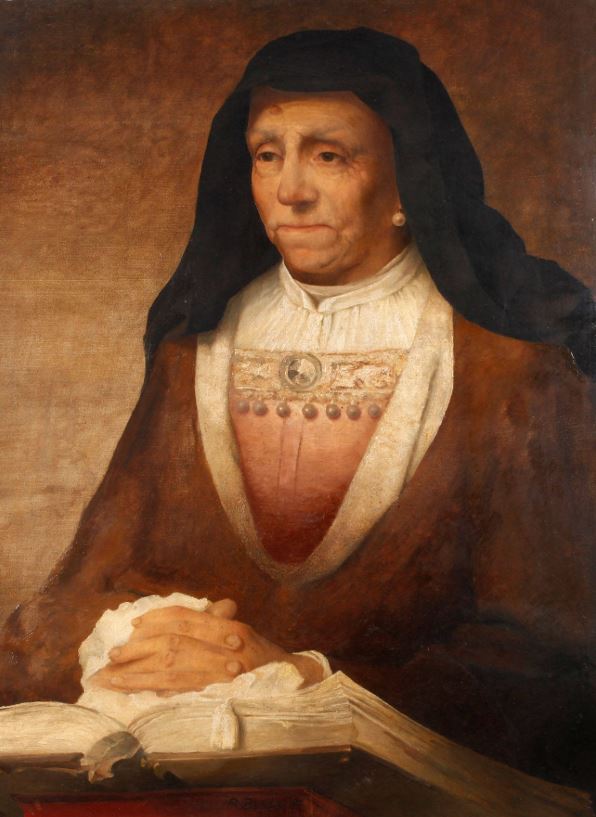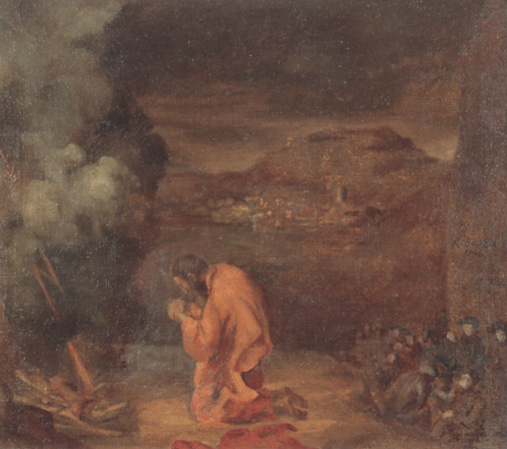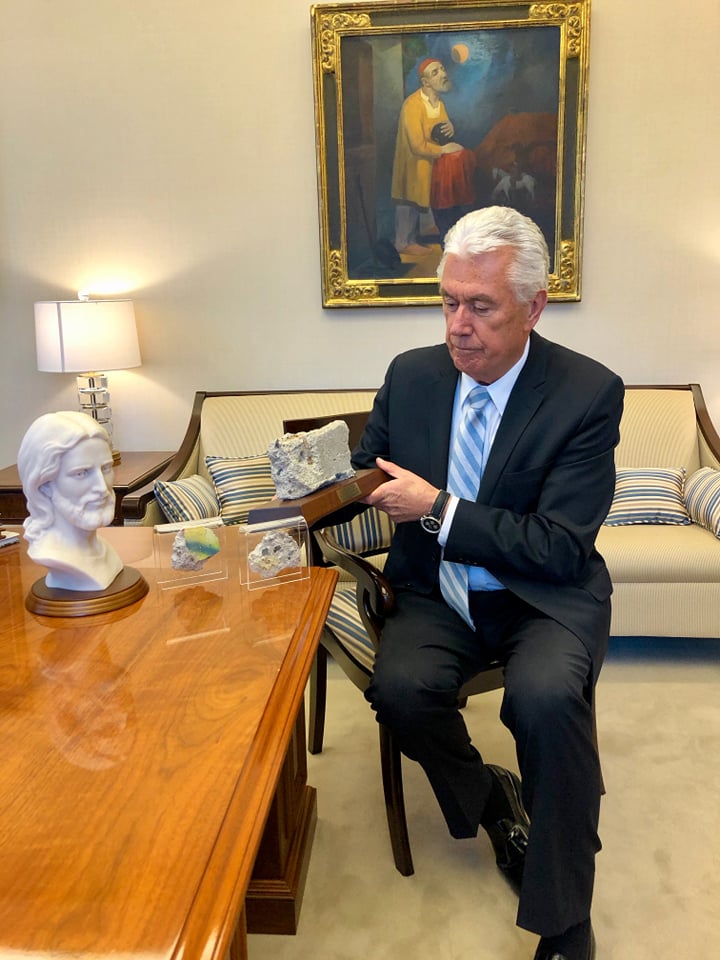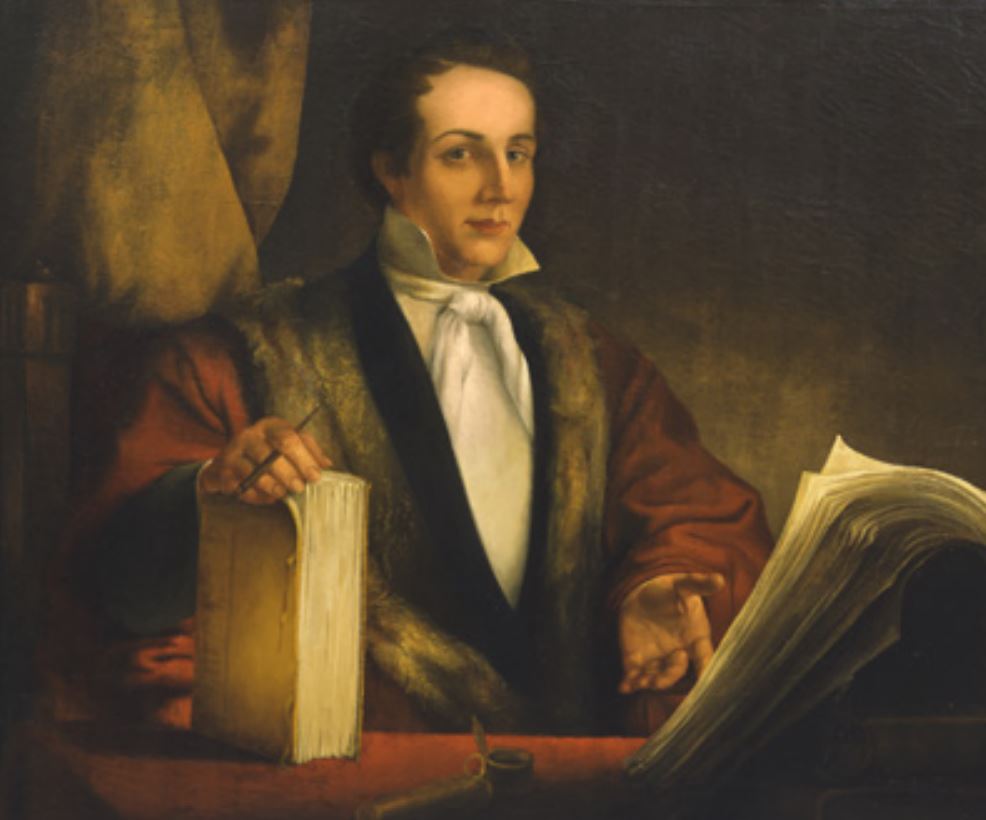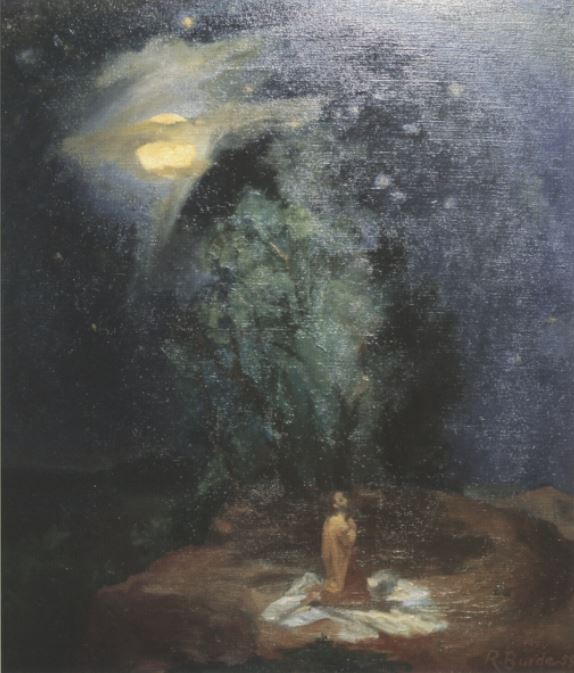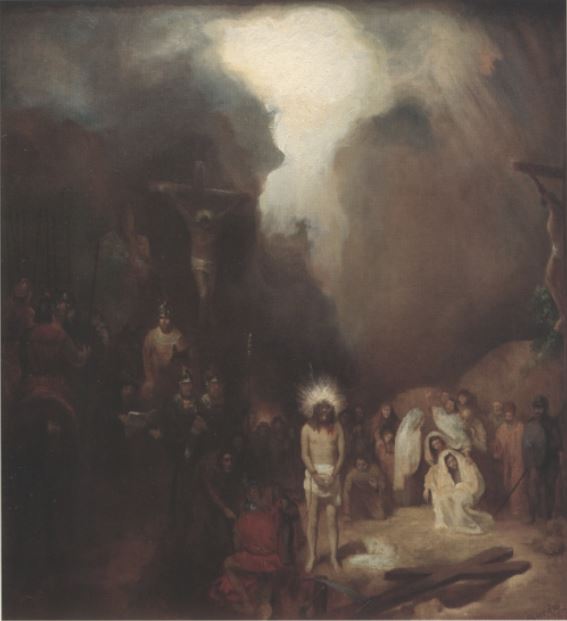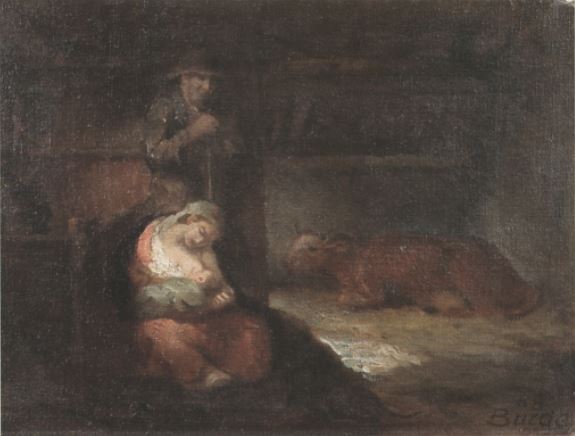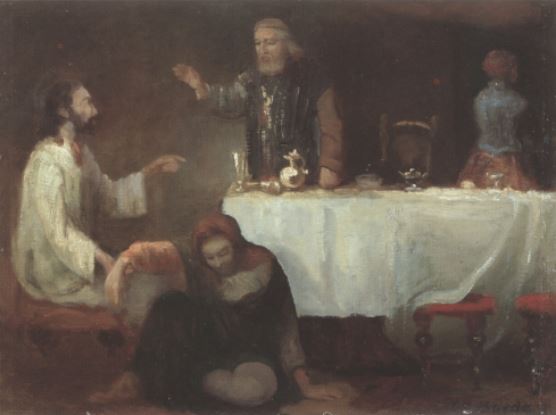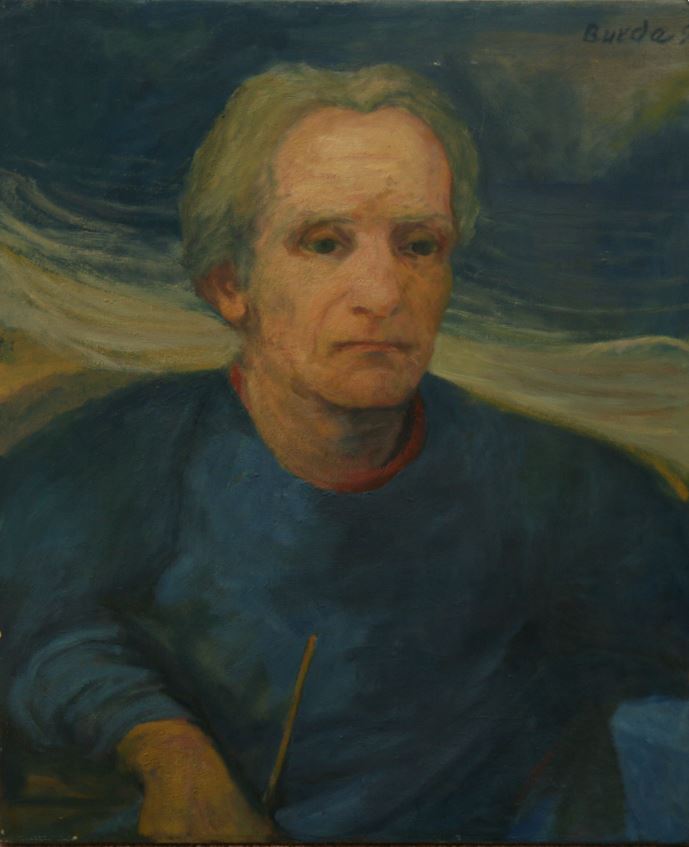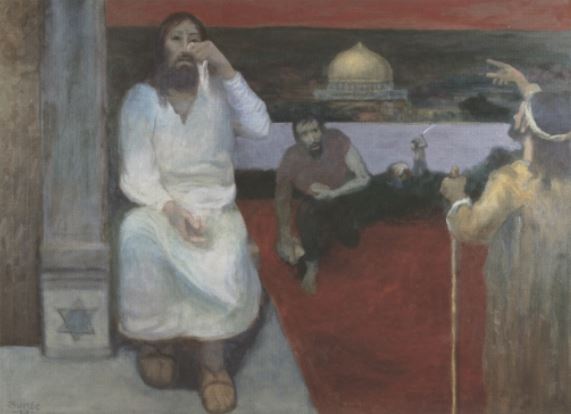Difference between revisions of "Richard Burde"
m |
m |
||
| Line 46: | Line 46: | ||
<big>'''Early Adult Years'''</big> | <big>'''Early Adult Years'''</big> | ||
| − | At age 24, Burde studied art at the [https://en.wikipedia.org/wiki/Dresden_Academy_of_Fine_Arts Dresden Academy of Fine Arts] from 1936 - 1939. <ref>https://www.mehlis.eu/de/catalogs/9118/item/4715/</ref> Of all times for Burde to be studying at this academy, this time period was possibly the most divided and dangerous the academy had ever been. With WWII on the brink of eruption, the Nazi regime's rising power had full influence over the academy's professors and their instruction. Burde would have witnessed professors teaching [https://en.wikipedia.org/wiki/Antisemitism antisemitic] beliefs, like [https://de.wikipedia.org/wiki/Fritz_Sauerstein Fritz Sauerstein] teaching Nazi-imposed [https://de.wikipedia.org/wiki/Rassentheorie Rassenkunde] beliefs. Burde also had several professors and classmates who used their art to support the Nazi movement, like [https://en.wikipedia.org/wiki/Rudolf_Bergander Rudolf Bergander], [https://en.wikipedia.org/wiki/Karl_Albiker Karl Albiker], and his own private teacher [https://de.wikipedia.org/wiki/Richard_M%C3%BCller_(K%C3%BCnstler) Richard Müller]. At the same time, he saw many professors of the academy fired by the Nazi regime because their artwork was deemed "[https://en.wikipedia.org/wiki/Degenerate_art entartet]", like [https://en.wikipedia.org/wiki/Otto_Dix Otto Dix], [https://en.wikipedia.org/wiki/Max_Feldbauer Max Feldbauer], [https://en.wikipedia.org/wiki/Ludwig_von_Hofmann Ludwig von Hofmann], [https://de.wikipedia.org/wiki/Margarete_Junge Margarete Junge] (the first woman who received professorship at the Dresden art academy), and [https://de.wikipedia.org/wiki/Wilhelm_Rudolph_(Maler) Wilhelm Rudolph]. One of the professors at the time, [https://de.wikipedia.org/wiki/Otto_Winkler Otto Winkler], joined the [https://en.wikipedia.org/wiki/German_resistance_to_Nazism German resistance to Nazism]. This politically charged and already war-torn atmosphere left Burde with an educational environment that was, to say the least, turbulent, divided, and polarized. That's to say nothing of the content of his education. Regarding the training he was receiving, it was just as equally divided. Further research into the aforementioned professors reveals the extremely multi-dimensional approaches that the various artists took in their field. The numerous artistic movements taught at the time | + | At age 24, Burde studied art at the [https://en.wikipedia.org/wiki/Dresden_Academy_of_Fine_Arts Dresden Academy of Fine Arts] from 1936 - 1939. <ref>https://www.mehlis.eu/de/catalogs/9118/item/4715/</ref> Of all times for Burde to be studying at this academy, this time period was possibly the most divided and dangerous the academy had ever been. With WWII on the brink of eruption, the Nazi regime's rising power had full influence over the academy's professors and their instruction. Burde would have witnessed professors teaching [https://en.wikipedia.org/wiki/Antisemitism antisemitic] beliefs, like [https://de.wikipedia.org/wiki/Fritz_Sauerstein Fritz Sauerstein] teaching Nazi-imposed [https://de.wikipedia.org/wiki/Rassentheorie Rassenkunde] beliefs. Burde also had several professors and classmates who used their art to support the Nazi movement, like [https://en.wikipedia.org/wiki/Rudolf_Bergander Rudolf Bergander], [https://en.wikipedia.org/wiki/Karl_Albiker Karl Albiker], and his own private teacher [https://de.wikipedia.org/wiki/Richard_M%C3%BCller_(K%C3%BCnstler) Richard Müller]. At the same time, he saw many professors of the academy fired by the Nazi regime because their artwork was deemed "[https://en.wikipedia.org/wiki/Degenerate_art entartet]", like [https://en.wikipedia.org/wiki/Otto_Dix Otto Dix], [https://en.wikipedia.org/wiki/Max_Feldbauer Max Feldbauer], [https://en.wikipedia.org/wiki/Ludwig_von_Hofmann Ludwig von Hofmann], [https://de.wikipedia.org/wiki/Margarete_Junge Margarete Junge] (the first woman who received professorship at the Dresden art academy), and [https://de.wikipedia.org/wiki/Wilhelm_Rudolph_(Maler) Wilhelm Rudolph]. One of the professors at the time, [https://de.wikipedia.org/wiki/Otto_Winkler Otto Winkler], joined the [https://en.wikipedia.org/wiki/German_resistance_to_Nazism German resistance to Nazism]. This politically charged and already war-torn atmosphere left Burde with an educational environment that was, to say the least, turbulent, divided, and polarized. That's to say nothing of the content of his education. Regarding the training he was receiving, it was just as equally divided. Further research into the aforementioned professors reveals the extremely multi-dimensional approaches that the various artists took in their field. The numerous artistic movements taught at the time included [https://en.wikipedia.org/wiki/Cubism cubism], [https://en.wikipedia.org/wiki/Expressionism expressionism], [https://en.wikipedia.org/wiki/Symbolism_(arts) symbolism], [https://en.wikipedia.org/wiki/Surrealism surrealism], [https://en.wikipedia.org/wiki/Magic_realism magic realism], just to name a few. A survey of all of Burde's works demonstrate a mastery of the numerous styles he was exposed to in his education. Additional art professors that contributed to Burde's artistic educational environment include [https://en.wikipedia.org/wiki/Max_Frey Max Frey], [https://en.wikipedia.org/wiki/Hans_Hartmann-MacLean Hans Hartmann-MacLean], and [https://de.wikipedia.org/wiki/Ernst_Sigismund Ernst Sigismund]. |
<big>'''Middle Adult Years'''</big> | <big>'''Middle Adult Years'''</big> | ||
Revision as of 15:13, 20 November 2019
| Richard Otto Burde | |
|---|---|
[[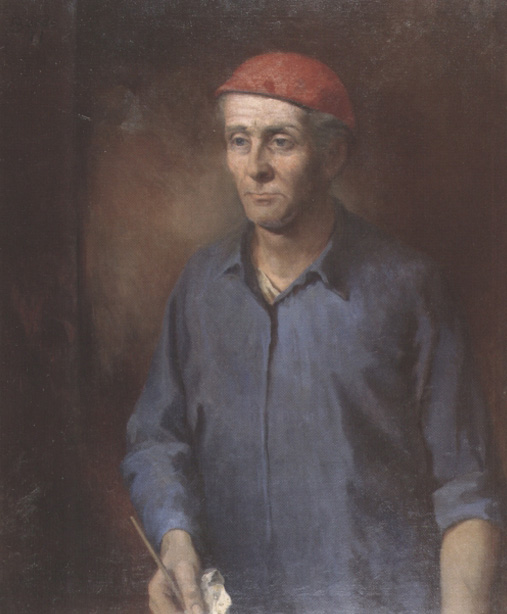 ]] ]] | |
| "Self-portrait," (Richard Burde) | |
| Born: | October 23, 1912 |
| Birth Place: | Frankfurt (Oder), German Empire |
| Died: | June 4, 1998 (aged 85) |
| Death Location: | Salt Lake City, UT |
| Nationality: | German |
| Education: | Dresden Academy of Fine Arts |
| Known for: | Western Art, Mormon Art |
| Notable Works: | The Return of the Prodigal Son, The Good Samaritan, Christ in Majesty |
Richard Burde (23. Oct 1912 - 4 June 1998) was a German painter from Frankfurt (Oder), whose works span the latter half of the 20th century. Through a series of events - including WWII military combat, a spiritual conversion, and immigrating to the United States - Burde has become a highly respected painter in the realm of modern religious art, particularly in the tradition of 20th century painters of The Church of Jesus Christ of Latter-day Saints (e.g. Arnold Friberg, Harry Anderson, and Minerva Teichert). [1]
Childhood
Richard Burde was born 23 Oct 1912 in Frankfurt (Oder) to the parents Emil Hermann Burde (1873-1976) and Bertha Rau (1878-1955). [2] [3] [4] Richard was the youngest of four children (he had 1 oldest brother and 2 sisters). Richard grew up in turbulent times, as WWI began just a few years after his birth, making Richard's hometown yield what researchers call a "war society" that emerged in Frakfurt Oder's economy, schools and churches. [5] Nonetheless, Richard's family was able to support him in his artistic interests, allowing the young boy to study with a local artist, Carl Kleindienst (1862-1942), [6] [7] who at the time was regarded as one of the most prominent artists in Frankfurt Oder because of his widely published illustrations on gardens and nature scenes. [8] Perhaps this early art teacher of Richard Burde's paved the way for Burde to later be so interested in landscape art. But it must be noted, that Richard's tutelage from Kleindiest clearly speaks to the providence of the Burde Family in Frankfurt Oder, that they can afford and arrange such a luxury for their youngest son. Records also indicate that the family owned a house in a very respectable part of the city, on Holzhofstraße 19 (this street that has since changed it's name).[9] [10] Still, we are left to assume that, being the youngest of four children and growing up in a very war-minded, tumultuous environment, this left a lasting effect on the young boy, as biographers have noted his life-long "shy, introverted... quiet" nature. [11]
Early Adult Years
At age 24, Burde studied art at the Dresden Academy of Fine Arts from 1936 - 1939. [12] Of all times for Burde to be studying at this academy, this time period was possibly the most divided and dangerous the academy had ever been. With WWII on the brink of eruption, the Nazi regime's rising power had full influence over the academy's professors and their instruction. Burde would have witnessed professors teaching antisemitic beliefs, like Fritz Sauerstein teaching Nazi-imposed Rassenkunde beliefs. Burde also had several professors and classmates who used their art to support the Nazi movement, like Rudolf Bergander, Karl Albiker, and his own private teacher Richard Müller. At the same time, he saw many professors of the academy fired by the Nazi regime because their artwork was deemed "entartet", like Otto Dix, Max Feldbauer, Ludwig von Hofmann, Margarete Junge (the first woman who received professorship at the Dresden art academy), and Wilhelm Rudolph. One of the professors at the time, Otto Winkler, joined the German resistance to Nazism. This politically charged and already war-torn atmosphere left Burde with an educational environment that was, to say the least, turbulent, divided, and polarized. That's to say nothing of the content of his education. Regarding the training he was receiving, it was just as equally divided. Further research into the aforementioned professors reveals the extremely multi-dimensional approaches that the various artists took in their field. The numerous artistic movements taught at the time included cubism, expressionism, symbolism, surrealism, magic realism, just to name a few. A survey of all of Burde's works demonstrate a mastery of the numerous styles he was exposed to in his education. Additional art professors that contributed to Burde's artistic educational environment include Max Frey, Hans Hartmann-MacLean, and Ernst Sigismund.
Middle Adult Years
As World War II broke out in 1939, it was just a year later that Burde was drafted into the German army at age 28. His time in the military took him to France, Belgium and the Soviet Union. [13] Burde fought in the military from 1940 - 1945. By this point in Burde's life, he had always been surrounded by influences of war: from experiencing the destructive effects of war in his hometown Frankfurt Oder, to witnessing the political division of his entire university faculty and education. For Burde to then be a participant in war himself, the overwhelming need for peace led him to search for it in spirituality. Burde came in contact with members of The Church of Jesus Christ of Latter-day Saints and was baptized into the faith in Dresden in 1941. The young convert's glowing belief in the prophetic doctrine taught by Joseph Smith can be seen in his illustration of Joseph Smith just 5 years later.[14] In this portrait, Burde likens Joseph Smith's image to that of a German classicist, like Goethe or Schiller. By portraying Joseph Smith as a fellow landsman and a classical scholar, Burde expresses that Joseph Smith's revelations were as to a personal enlightenment to him as well. Unique to this time was that there were no foreign missionaries in Germany, meaning it was simply members (in Burde's case, a neighbor) of The Church of Jesus Christ who "told their friends of their faith, and several baptisms of adult converts were the results." [15] Burde continued fighting in the military until 1945, when he was injured while on the Russian front.
Upon returning to Dresden and after the war had ended in May 1945,[16] Richard Burde married his wife, Elfriede Zehl (1903 - 2000), on 24. July 1945 in Dresden. [17] This union not only gave Burde the new role of "husband" but also the role of "step-father" - Elfriede Zehl already had a daughter, who was at this point 13 years old. The family remained in Dresden for some years, and Burde was able to work as an artist during this time. However, as many Germans noticed, the government of East Germany was becoming ever constrictive and divisive. So Burde and his family fled the country (as did 2.7 million other East Germans [18]) and immigrated to the United States in 1951, just one year before the border between East and West Germany was closed. [19] We can get an idea of the artist's style at this point by one painting the artist left behind, Frau im Gebet (1947), and another painting he managed to take with him, The Prophet Elijah and the Priests of Baal (1946).
Final Years
Burde moved to Utah with his family and settled in Salt Lake City in 1953, at the age of 41. His marriage was later solemnized in the Salt Lake Temple. He continued to work as a freelance artist, and won several first place awards for his work exhibited at the State Capitol and State Fair. The LDS Church Museum holds many of his religious paintings. [20] One curator has described his style as such:
"[Burde's] shifting style variously draws on the sharply contrasted lights and darks of the Dutch Baroque, the moons and skies of American Romantics, and the bold, brightly colored shapes of postimpressionism. Linking all his works however is humility and compassion, strikingly mixed with emotional intensity and spiritual courage... In America the artist was isolated from many of those around him by the unfamiliar language and culture, by his shyness, and sometimes by economics. However, he has maintained a regular study of the scriptures and of European and classical thought and cultural arts. The resulting introspection enhances the process of likening the scriptures to himself. Thus the Good Samaritan takes the traveler to a German Inn, Mary and Joseph are a German peasant couple sharing an intimate moment with their new baby, and Joseph Smith is a German scholar studying the scriptures." [21]
Richard Burde passed away at age 85 on June 4, 1998. [22] The Deseret News published an article honoring his life, reporting that alongside his rigorous artistic endeavors, he was also very active in community service within his Church. [23]
The Return of the Prodigal Son (1962), by Richard Burde
Possibly the most popular and appreciated of Burde's paintings, The Return of the Prodigal Son, can be seen hanging in the office of Elder Dieter F. Uchtdorf, an Apostle of The Church of Jesus Christ of Latter-day Saints. [24] The painting is also hanging in the Church's Frankfurt Temple.
References
- ↑ https://www.jstor.org/stable/43041683?read-now=1&seq=1#page_scan_tab_contents
- ↑ https://www.saltlakefineart.com/collections/oils/products/ray-burde
- ↑ https://www.findagrave.com/memorial/96961061/richard-burde
- ↑ https://ancestors.familysearch.org/en/KWC2-WL9/richard-otto-burde-1912-1998
- ↑ https://www.borders-in-motion.de/en/-/frankfurt-oder-im-ersten-weltkrieg-der-entgrenzte-totale-krieg-und-die-heimatfront-
- ↑ https://www.mehlis.eu/de/catalogs/9118/item/4715/
- ↑ http://www.museum-viadrina.de/sammlung/bestandsuebersicht/
- ↑ https://www.moz.de/landkreise/oder-spree/frankfurt-oder/artikel9/dg/0/1/1470386/
- ↑ https://opus4.kobv.de/opus4-slbp/frontdoor/index/index/docId/14462
- ↑ https://c8.alamy.com/comp/H3YJTY/frankfurt-an-der-oder-antique-town-city-stadtplan-hessen-karte-1904-H3YJTY.jpg
- ↑ https://www.jstor.org/stable/43041683?read-now=1&seq=1#page_scan_tab_contents
- ↑ https://www.mehlis.eu/de/catalogs/9118/item/4715/
- ↑ https://www.mehlis.eu/de/catalogs/9118/item/4715/
- ↑ https://www.sunstonemagazine.com/pdf/140-18-27.pdf
- ↑ http://mormonhistoricsites.org/wp-content/uploads/2013/03/German-and-Austrian-Latter-day-Saints-in-World-War-II-An-Analysis-of-the-Casualties-and-Losses.pdf
- ↑ http://mormonhistoricsites.org/wp-content/uploads/2013/03/German-and-Austrian-Latter-day-Saints-in-World-War-II-An-Analysis-of-the-Casualties-and-Losses.pdf
- ↑ https://www.findagrave.com/memorial/96960944/elfriede-burde
- ↑ https://www.dialoguejournal.com/wp-content/uploads/sbi/articles/Dialogue_V25N04_13.pdf
- ↑ http://www.dailysoft.com/berlinwall/history/why-the-berlinwall-was-built.htm
- ↑ https://salt-lake-fine-art.myshopify.com/products/richard-burde
- ↑ https://www.jstor.org/stable/43041683?read-now=1&seq=1#page_scan_tab_contents
- ↑ https://www.findagrave.com/memorial/96961061/richard-burde
- ↑ https://www.deseret.com/1998/6/7/19384488/death-richard-o-burde
- ↑ https://www.facebook.com/dieterf.uchtdorf/photos/pcb.1067172970120046/1067172456786764/?type=3&theater
